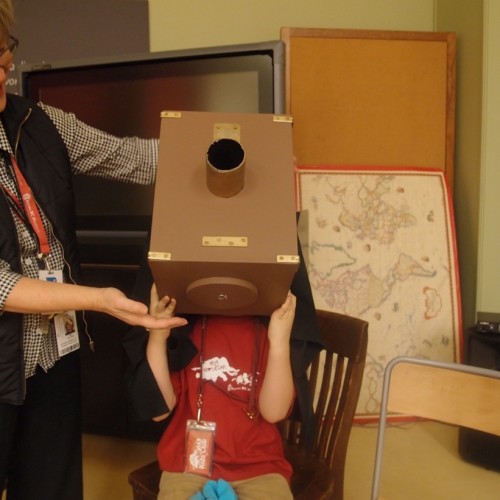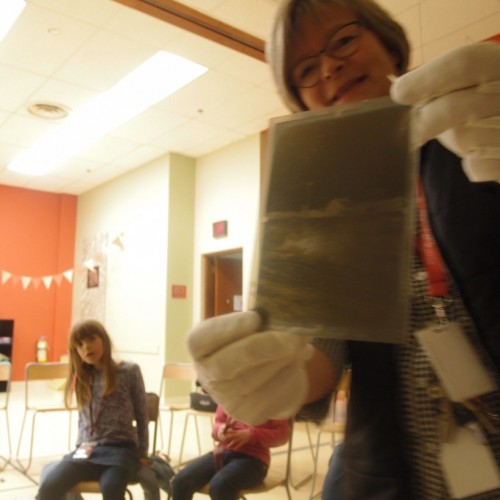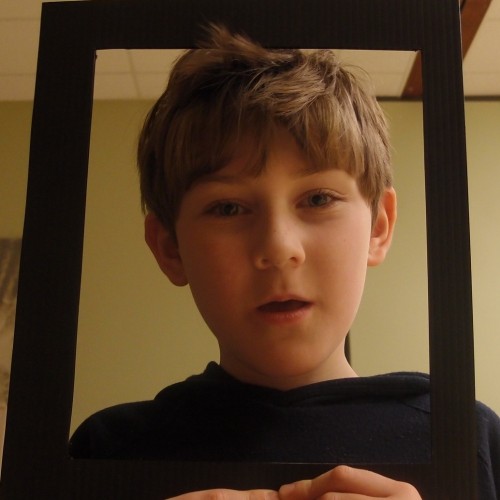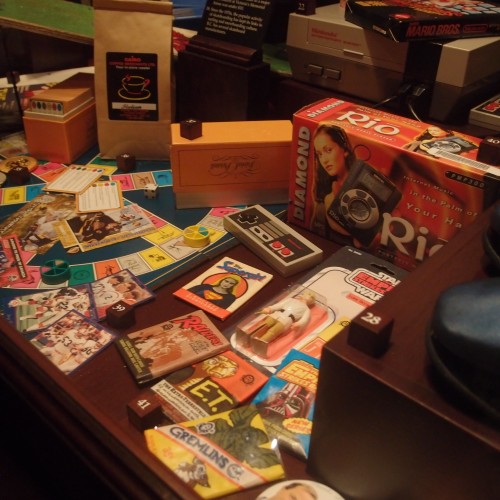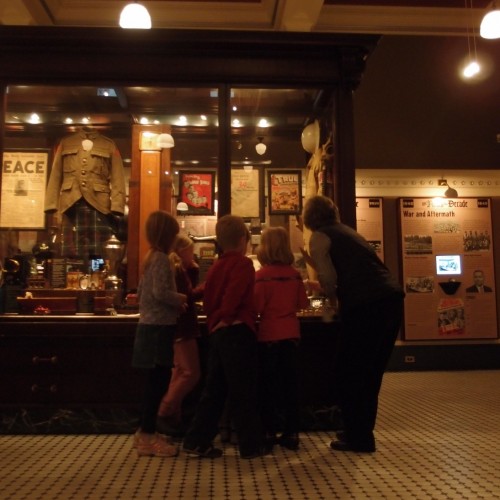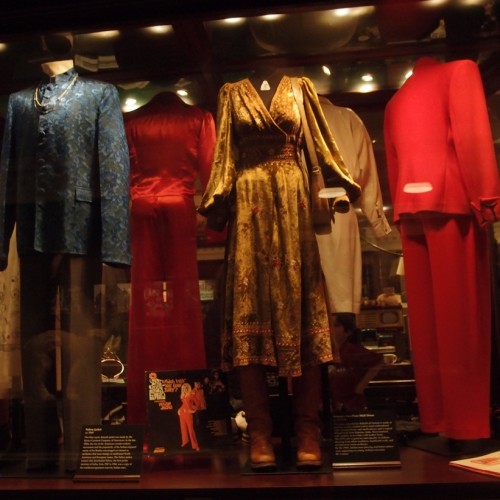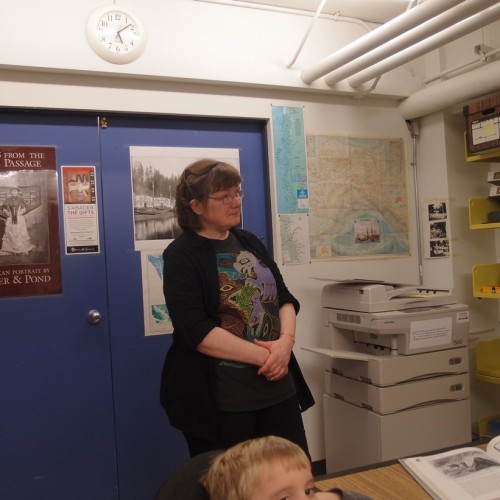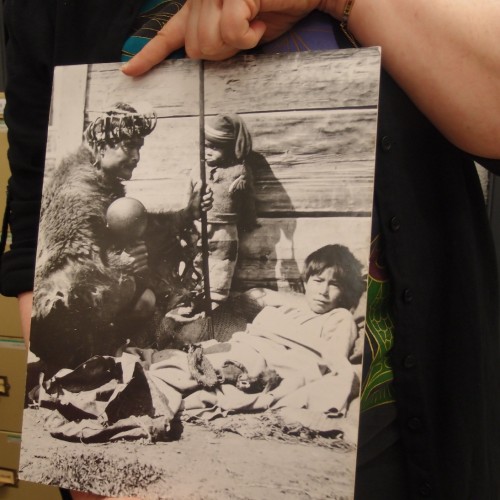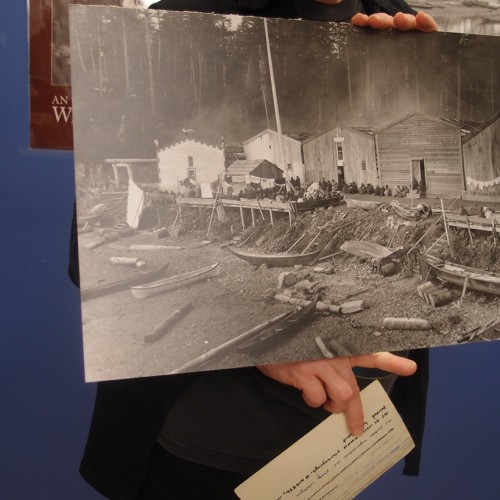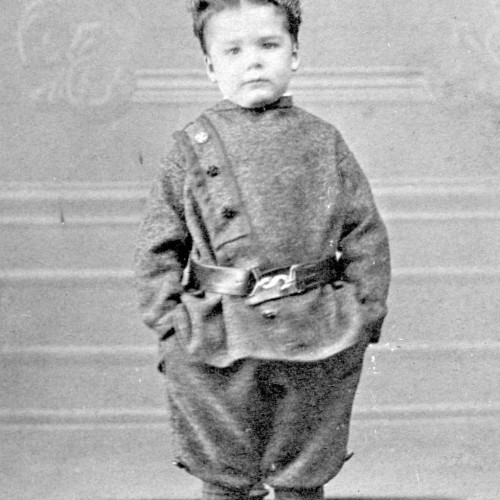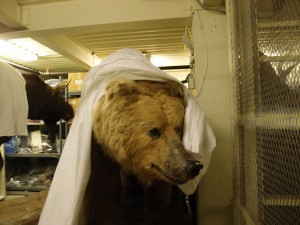
This week, the post is written by my colleague and guest blogger Ann ten Cate.
Week #9- Lorna Julyan- Ethnology Audio and Visual Collection Manager
Before our visit to the Ethnology Audio Visual Collection, we gathered to talk about cameras and historical photography – and of course one of the first things we did was take pictures of ourselves with our heads stuck inside a reproduction of a big box camera. This is a good way to find out what it would have been like to work as a photographer a hundred years ago. We soon realized that these old cameras were very heavy, and would have taken a lot of work to carry around and use. (A tripod is usually recommended!)
And instead of using film or a digital system, these cameras used sheets of glass coated with chemicals to create a photographic image. You had to stick your head under the black cloth behind the camera in order to see through the lens – and if you let any light into the back of the camera, your picture would be ruined.
I’ve got my white gloves on because fingerprints are hard to clean off historical glass negatives – spraying them with window cleaner isn’t recommended!
We also talked about why we take photographs. Some of the Kids’ Club members take them to help them remember friends and family, and others take them to remember beautiful things they have seen. Sometimes we print our family pictures and hang them on the wall – lots of people in the 19th century did this too.
It would be nice if our family portraits could be 3-D like this one! Maybe one day they will be…..
People who used to take photos in the past also used them as a way of recording new and interesting places and cultures – which is what our guest for the day, Lorna Julyan, told us all about when we went up to visit her on the 11th floor, where she is the Collections Manager for the Ethnology Audio and Visual Collection.
On the way to her office we visited Century Hall to find other types of cameras in the exhibits – we got a bit sidetracked by some of the toys and clothing in the display cases, and took photographs of them too. Isn’t it great that with digital photography and our modern cameras we can take hundreds of pictures without worrying about how we are going to develop or print them? We can be much more spontaneous about when and where we take photographs than our grandparents.
Everybody enjoyed seeing and hearing about the Polaroid camera – the one that spat out a blank white print which slowly turned into a picture, like magic, right before your eyes.
After our journey up to the 11th floor, we found Lorna, who looks after about 25,000 photographs of First Nations people. Many of these were made by the first explorers, traders and missionaries in British Columbia. These early visitors to BC were fascinated by the differences between their culture and the First Nations culture – and wanted to show the rest of the world what the First Peoples of British Columbia looked like.
Later on, they also made films and sound recordings of First Nations people – and Lorna looks after these too. She also puts a lot of information about these audio-visual records into our massive collections database – so that we can find them more easily.
Lorna showed us this photo of a shaman working to cure a sick boy. Everybody was impressed with his bear claw head-dress. Lorna explained that the photos we were seeing were copies because the originals are too fragile to handle – especially all those ones that are glass plate negatives!
Lorna keeps them in special cabinets in acid-free envelopes to make sure that when someone visits the Museum in another 100 years they’ll be able to see the photographs and negatives too. But for anyone who wants to do research using these images, she has small copy prints on cards, with all the information we know about these photos written on the back.
This enlarged photo is of a potlatch held at a village on the west coast of Vancouver Island. As Lorna explained, this village doesn’t exist anymore so the photo is a really important record of what First Nations buildings and canoes looked like. One of our Kids’ Club members figured out that the building on the left painted white had special totems on the roof, which might mean it was the chief’s house.
We all left thinking that we’d like to spend more time looking at all the faces and places in this special collection. Maybe we’d even be able to spot one of those special braces that people had to wear when they were having their photo taken to keep them still.
Can you see the legs of the brace in this photograph of Gordon Bushby? His belt is covering the round iron hoop that would have gone around his waist.
It doesn’t look like having your photo taken back then was a whole lot of fun!



